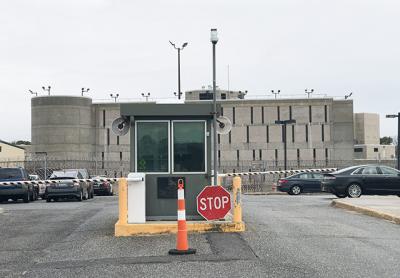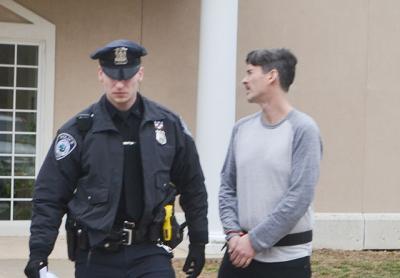Civil Liberties Union Seeks to Slow Deportation Cases
Civil Liberties Union Seeks to Slow Deportation Cases

The question of whether or not the Suffolk County Sheriff’s Department will honor requests from United States Immigration and Customs Enforcement to hold prisoners for 48 hours after their scheduled release — to allow ICE agents the time to take them into custody — will likely be answered in the coming days by the Supreme Court of the State of New York’s Appellate Division, Second Department, in Brooklyn.
The decision will have statewide, and even national, implications.
These hold requests, commonly called “detainers,” are being challenged by the New York Civil Liberties Union. The lead attorney in the challenge is Jordan Wells. According to Mr. Wells, who filed a brief in early January, when Suffolk County detains someone at the request of ICE, it is, in effect, arresting without a warrant. The N.Y.C.L.U. calls the practice of detaining prisoners on an administrative warrant attached to an ICE detainer request a “warrantless arrest.”
The appeal started on behalf of Susai Manickam Francis, 55, originally from India, who was living in Northport and was arrested several times last year. On Dec. 11, he pleaded guilty to a disorderly conduct charge in a Suffolk County courtroom in Central Islip, and was sentenced to time served. However, instead of being immediately released, he was taken to county jail in Riverside and held.
The civil liberties union tried to prevent the Suffolk County sheriff’s office from detaining Mr. Francis by filing an appeal. While the court did not act upon Mr. Francis’s case immediately, and he was picked up from county jail by ICE officers, it asked both parties, as well as the attorney general’s offices of the United States and of New York State, to weigh in. Both attorneys general have now filed briefs on the case. The civil liberties union was scheduled to respond Tuesday.
According to the briefs, the Suffolk County sheriff’s office has an “inter-governmental agreement” with ICE to detain those targeted by the federal agency. County Sheriff Errol D. Toulon Jr. said, during a meeting with the press in his Yaphank headquarters on Friday, that the county leases 150 county jail beds to ICE. All of those beds are in the Riverside jail, though the sheriff said that some may be moved to the Yaphank jail.
Arresting a defendant who otherwise would be released, either after having served a sentence or after posting bail, is described in the court papers. According to the brief submitted on behalf of the sheriff’s office — in the name of then-Sheriff Vincent F. DeMarco, and written by Dennis M. Brown, the Suffolk County attorney — the holds are based on the fact that ICE “has probable cause to believe that the subject is a removable alien.” That probable cause used in each case can vary widely. There might be a court order to deport the individual; or there might be a pending court action to remove them; or fingerprints or other biometrics might throw up a red flag, indicating that he or she either lacks legal status in the country or, if they do have lawful status, are removable for some other reason. Statements made by such individuals to law-enforcement officers can be used against them in their immigration cases, the sheriff’s brief says.
The agreement between the county and ICE requires that “an inmate, against whom a detainer and accompanying administrative warrant has been lodged, is rewritten” — that is, transferred with the necessary paperwork — “from local custody to federal custody. At the time of the rewrite, the inmate is in the custody of ICE. The inmate is then placed into a cell at the correctional facility that is rented by ICE.” All this is done at the Riverside jail by local, not federal, officers.
The N.Y.C.L.U. takes a different view of the matter. According to the brief filed by the civil liberties union on Jan. 5, holding Mr. Francis past his time served sentence was “a warrantless arrest that New York officers have no authority to perform.” The brief states that the warrant used “is not reviewed or signed by a judicial officer,” making it unlawful under state law.
As of the date the N.Y.C.L.U. brief was filed, the civil liberties union says, Mr. Francis was still being held by ICE. “He has not seen an immigration judge or any neutral judicial officer since he was detained at the courthouse in Central Islip on Dec. 11, 2017, and he does not yet have a date when he is scheduled to be brought to immigration court.” Naomi Dann, a spokesperson for the civil liberties union, said this week that Mr. Francis has still not had a court appearance.
Despite the fact that Mr. Francis’s case would appear to be moot, since he is already in ICE custody in a facility in Bergen County, N.J., the brief filed by the civil liberties union states that it is “fair to anticipate that in 2018 alone, hundreds of individuals could be affected by a decision in this case.”
Under New York State’s Criminal Procedure Law, the civil liberties union asserts, an arrest warrant is defined as “a process issued by a local criminal court directing a police officer to arrest a defendant, and to bring him before such court.” ICE’s administrative warrant process does not comply with this law, Mr. Wells contends.
Mr. Brown’s brief for the Sheriff’s Department counters that federal law gives ICE a great deal of latitude in how it proceeds. Federal law, he writes, calls on local authorities to cooperate with the process, and that this cooperation has been found to be legal by the United States Supreme Court, so long as that cooperation “is pursuant to a request, approval, or other instruction from the federal government.”
“States retain inherent authority to cooperate with ICE detainers, and it does not, and cannot, show that New York has relinquished that authority,” Mr. Brown writes.
New York State Attorney General Eric T. Schneiderman weighed in on Jan. 31, submitting a brief that supports the civil liberties union’s position, according to Mr. Wells. It is the first time that the attorney general has expressed an opinion on the highly consequential issue of ICE detainers.
Crafted by Scott A. Eisman, assistant solicitor general for the state, the attorney general’s brief argues that “New York law forbids arrests based solely on an ICE detainer and accompanying administrative warrant.” Furthermore, it states, “State and local officers lack a statutory or common-law basis to arrest people based solely on administrative immigration warrants.”
Mr. Eisman also writes that, according to federal law, the Suffolk County attorney’s office is only required to act in cooperation with ICE on occasions when it is “consistent with state and local law.” When local officers detain suspects based solely on a detainer request, he argues, they are violating “federal constitutional protections,” particularly the Fourth Amendment. He writes in his brief that Department of Homeland Security regulations require that cooperating officers — those who execute warrants of arrest on ICE’s administrative immigration violations — must meet specific training standards and hold specific titles: “Nowhere are state or local officials mentioned among the eight categories of officials who are authorized to execute such warrants.”
Mr. Eisman did find, however, that “if a New York police officer or peace officer has reason to believe that the subject of a detainer has committed a crime, that person may be arrested without a criminal warrant.”
The federal response came in a brief also filed around Jan. 31, and written by Steven A. Platt, a trial attorney for the United States Department of Justice’s Civil Division.
The federal position is diametrically opposite to those of the civil liberties union and the state attorney general. “Cooperation with ICE detainers and warrants is consistent with New York statutory law,” Mr. Platt writes, “and even if cooperation with ICE detainers and federal warrants is inconsistent with one New York statute governing arrests, it is nonetheless lawful because it complies with local governments’ residual, common-law police powers.”
“Without such cooperation,” the federal response continues, “removable aliens would be released into local communities, where it is harder and more dangerous for ICE to take custody of them, and where they may commit more crimes.”
Even if the arrests are warrantless, Mr. Platt argues, “such arrests made in support of federal law enforcement are independently lawful under New York law.”
The decision in State Supreme Court is expected within the next few weeks. In the meantime, immigrants arrested in Suffolk County who otherwise might be released from custody will still be subject to potential 48-hour ICE detainers. Suffolk County Sheriff Errol Toulon Jr. said at a media round table last week that he had no intention of changing his department’s policy and that his officers would continue to hold prisoners at the request of ICE.







